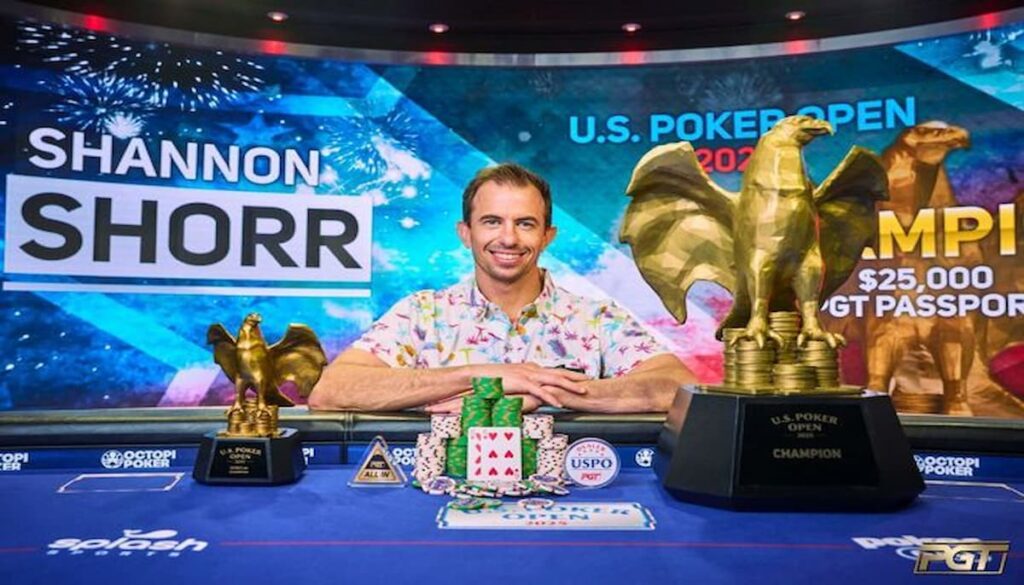The $565 buy-in Colossus poker tournament attracts the largest field of any World Series of Poker event. Unfortunately, this year’s Colossus fielded the smallest group of players in its short history.
Brazilian Roberly Felicio won the event, banking the $1,000,000 first-place prize
Colossus fields shrink each year
This year’s tournament fielded 13,070 entries. The tournament, a five-day event, ran from June 2 to June 7.
There’s no denying the tournament is a gigantic event. Multiple big-name players offer instructions for how to navigate the huge number of players in the event.
Still, this year’s event was the smallest incarnation of the Colossus so far. In fact, the fields have shrunk each subsequent year since the tournament’s debut in 2015.
The 2015 event remains the largest version of Colossus. In fact, it’s the largest live tournament ever played, with 22,374 entries generating a prizepool that ballooned over $11 million.
The fields have tumbled by 42 percent since. Even more alarmingly, each year’s decline has been greater than the last.
This year’s event hosted nearly 5,000 fewer entries than 2017’s event alone. Overall, attendance is down by more than 9,000 entries.
WSOP NJ – Get $10 No Deposit
-
 Visit WSOP NJ
Visit WSOP NJ- $10 FREEUp To $1,000 Bonus With Deposit
- WSOP NJ ReviewOverall Grade A-
- Games A
- Support B
- Banking A+
- Player Value A-
Why the shrinkage, WSOP?
The dying fields might seem confusing. After all, the WSOP continues chugging along, with this year’s Main Event ranking as the second-largest in that event’s history.
However, there are three main reasons that the Colossus is less colossal this year:
Cannibalization
WSOP management took a bit of a flyer on the Colossus in 2015. There was a great deal of uncertainty about offering such a low buy-in event.
Furthermore, the team had to withstand criticism from top pros and amateurs alike. The low buy-in drew their ire because, in their view, it cheapened the value of the coveted WSOP bracelet.
So, when tens of thousands of people showed up, management felt emboldened about smaller buy-in events. It began introducing more low buy-in tournaments in 2016, when a $565 Pot-Limit Omaha event appeared.
The following year brought two events which were actually lower in buy-in than even the Colossus. A $333 online poker event on WSOP.com and the $365 buy-in Giant likely shaved off some of the players who would normally stretch for the Colossus.
So, in 2018, WSOP hit an all-time high for low buy-in tournaments, introducing a PLO Giant. That addition brought the total of three-digit buy-in events to five.
Scheduling/competition
The Colossus field also shrank due to the numerous options available to players at the same time. Two of the aforementioned low buy-in events ran either just before or during the Colossus.
For example, the $365 WSOP.com event ran entirely on what amounted to be Day 2 of the Colossus. The player pools from those two events alone combined for nearly 12,000 entries. Sure, some players multi-tabled by playing on their computer or tablet at the table
There was also an MSPT event at Venetian running at the same time. This event, part of Venetian’s Deepstacks Series, drew over 4,400 entries and carried a guarantee of $3.5 million.
All these competitors and complaints about the tournament structure could lead to a dwindling field. However, there is also one other, and simpler, reason for the decline.
Novelty
It may sound unfair, but the Colossus just isn’t the new baby anymore. The event still promises a big field, sure, but the addition of so many new events – including the lower buy-in ones – have drained interest in the tournament.
This problem doesn’t have an easy solution. The reason why a tournament like the Main Event can continue to sustain or grow usually has to do with its presentation.
The Colossus has a reputation as a tournament for getting lucky, rather than as a skill-heavy event. Aside from the chance of rubbing elbows with famous pros (who are likely goofing around), there’s not much draw for a player who has worked hard to hone his or her game.
Winning a WSOP bracelet means engaging in gambling, to be sure. However, at their core, the events themselves should not be gambles. Otherwise, we should all just play slots tournaments.
The post Can WSOP Turn Around The Not-So-Colossal Colossus? appeared first on Play USA.






